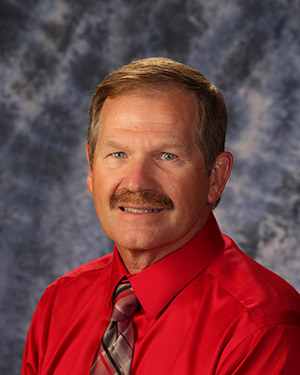It’s a fact—secondary teachers are by nature more individualistic than lower-grade teachers. In most schools, they are singleton teachers who are specialists in their content area. Although this specificity is critical at the secondary level, it can often prevent collaboration and collegiality from becoming part of your school culture. The question for secondary school leaders is, how do you encourage content-area teachers to work together for the benefit of all students? Essentially, how do you transition from a staff to a team?
Although every educational leader must select strategies that fit their specific school environment, at Big Piney High School, we have implemented the following practices that I believe encourage a high level of collaboration and collective efficacy.
1. Agree upon and set schoolwide goals.
One of our schoolwide goals was to raise the proficiency level of our ACT scores. Prior to 2014, our high school had never scored above the state average on the state-mandated ACT. We looked at the data and devised a schoolwide plan to make improvements. Although I won’t get into all the specifics, the centerpiece was to involve everyone, not just the English, math, and science departments. Each teacher, regardless of their content area, is required to lead critical thinking and ACT exercises during every block period (twice a week for us). All students experience eight such exercises a week. The history teacher, the art teacher, the music teacher, the P.E. teacher, and the welding teacher all become part of the team to raise our scores. As a result, our high school experienced five consecutive years of scoring in the top half of the state and had the highest ACT math score in Wyoming.
2. Provide leadership opportunities for your team members.
Just as engaged students learn more, engaging your teachers grows their efficacy. At Big Piney High School, each teacher serves on at least one leadership team. We let teachers select from the following teams:
- Data/Assessment
- Peer Mentor/Culture
- Advisory/Guided Reading
- Technology
Each team meets monthly with a stated purpose and agenda. This allows a small group of teachers to focus on schoolwide issues within their team’s domain. Leadership team members plan specific strategies to address our school’s needs and then communicate their ideas to the entire teaching staff.
For example, our technology leadership team addressed a common challenge for 1:1 schools—preventing damage to school issued devices. Instead of just fining students or having them pay for costly repairs, our team came up with the proactive idea of rewarding students that have damage-free devices. Teachers inspect student devices each quarter, and students that have no new damage to their device are entered into a grade-level drawing for local gift cards. Leadership teams help us maximize our human resources, provide teacher engagement into addressing schoolwide issues, and, of course, promote teacher leadership.
3. Share effective learning strategies.

This practice allows our teachers to highlight and share their most effective strategies with their colleagues. All teachers take a piece of scheduled professional development time to highlight a particular practice they are using in their content area that could be applicable to all content areas. We provide different themes for teachers to focus on each year, including providing feedback to students, implementing high engagement learning activities, developing literacy skills within a specific content area, and using technology, to name a few. This single practice has really broken down walls within our school and promoted collaboration within our team. I love these sessions because I learn so much from my teachers.
4. Encourage peer observations.
“The single greatest influence on the professional practices of teachers is the direct observation of other teachers.”—Douglas B. Reeves
Remember that secondary teachers are by nature more individualistic than lower-grade teachers—they are singletons by nature and design. In their defense, they often lack the opportunity to collaborate with their colleagues. As educational leaders, we need to provide that opportunity. In our high school, we require teachers to schedule peer observations with their colleagues at the high school, middle level, or elementary school. We also encourage day trips to observe teachers from different schools in our area. Teachers record their peer observations and the debriefing that follows between the host and visiting teacher on a shared Google doc. Our goal is to tear down the walls that divide teachers and content areas and promote transparency and collaboration. We want to be known as an effective instructional team that learns from each other. If you have tremendous things happening in a specific classroom, why would you not want all your teachers to observe, experience, and learn from that environment?
5. Model a collaborative mindset.
School leaders must model whatever change or improvement they are seeking to create in their school. For me, it means I need to be an authentic collaborator that listens and is open to the ideas of my team as well as my colleagues in other schools. If I expect my teachers to collaborate and learn from each other, I too need to seek ideas and input from other principals. A major influence for me has been my involvement in our state principals’ association. In Wyoming, we use a roundtable discussion format that we call “campfires.” Before COVID-19, these were often in-person gatherings, but lately they have turned into “Zoom fires.” I have picked up leadership strategies and practices from these collaborative opportunities, and I know several principals that I feel comfortable reaching out to for advice and input.
I am confident that you have practices that are effective for you when it comes to getting your teachers to work together as a team for the benefit of all your students. What does your most effective practice for uniting your staff look like?


7 Comments
Thank you. Well written good advice.
Thanks Leeana, my first ever blog.
Great post, Mr. Makelky! As a former staff member of yours, I can attest that all of the things you listed are accurate. I particularly appreciate you including specific examples for each practice that you listed. Five very doable practices for our educational leaders. Thanks!
Well written Jeff! Thanks for your work and I appreciate the 5 strategies to consider in ensuring collaborative team work!
Looking pretty snazzy! Good enough to publish! How do you “require” the peer observation piece? How do you hold folks accountable for this?
Excellent ideas. Thanks Jeff.
Some great practical advice! Well written, Jeff.